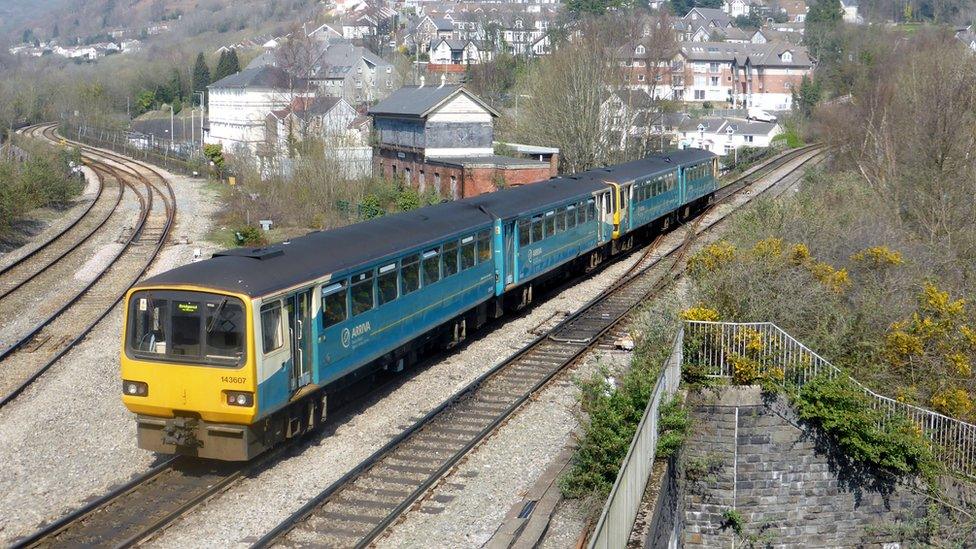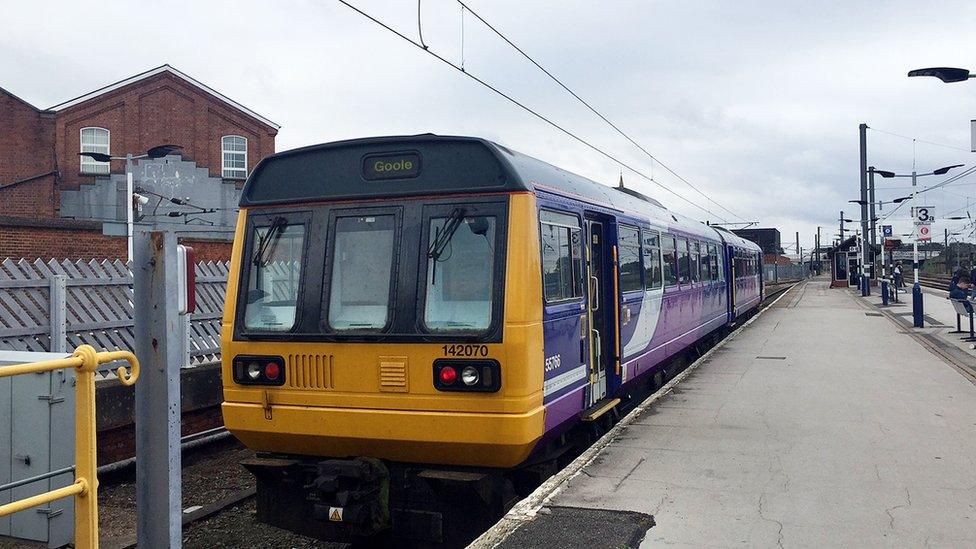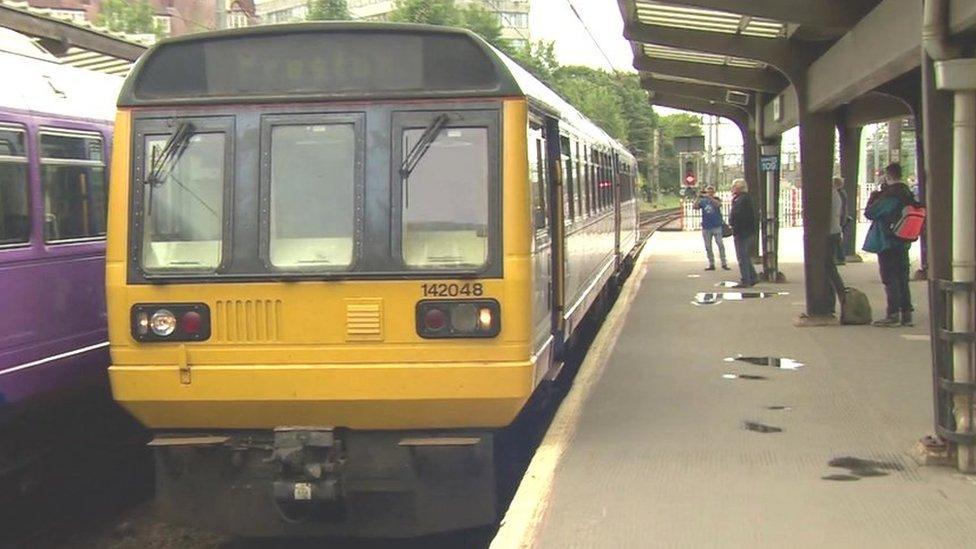'The trains that refuse to die'
- Published

Pacers were built in the 1980s and are still used in various parts of the country
The much-derided Pacer trains could be celebrated as a British engineering success story.
Built in the 1980s - initially as a joint venture between British Rail and Leyland Motors - they were supposed to be a stop-gap solution with a lifetime of just 20 years.
But they are the trains that refuse to die.
Pacers may also have been the saviour of some rail routes that could have been closed, had more expensive trains been introduced on them.
It may be of little consolation to passengers sitting on the bench seats, enduring the squeals as the carriages bend around curves, but Pacers are also highly economical with their diesel engines capable of running at 10 miles to the gallon.
They have, though, become tainted under the Northern rail franchise - a symbol of its failings.
Yet it is the Spanish company CAF that deserves to at least share the blame for the retention of a small number of Pacer units.
The company, which is bidding to build new trains for use on the Tyne and Wear Metro, has failed to construct and deliver new trains on time.
As for the call from two metro mayors and a council leader for passenger compensation for those forced to use Pacers, that is probably not feasible.
While Northern's parent company is Sunderland-based Arriva Trains - itself owned by Deutsche Bahn, which has the German government as its single shareholder - the franchise itself is said to be at risk of insolvency.
That means no deep pockets to dig into to compensate those bone-shaken passengers.
- Published21 October 2019

- Published12 August 2019

- Published30 June 2019
